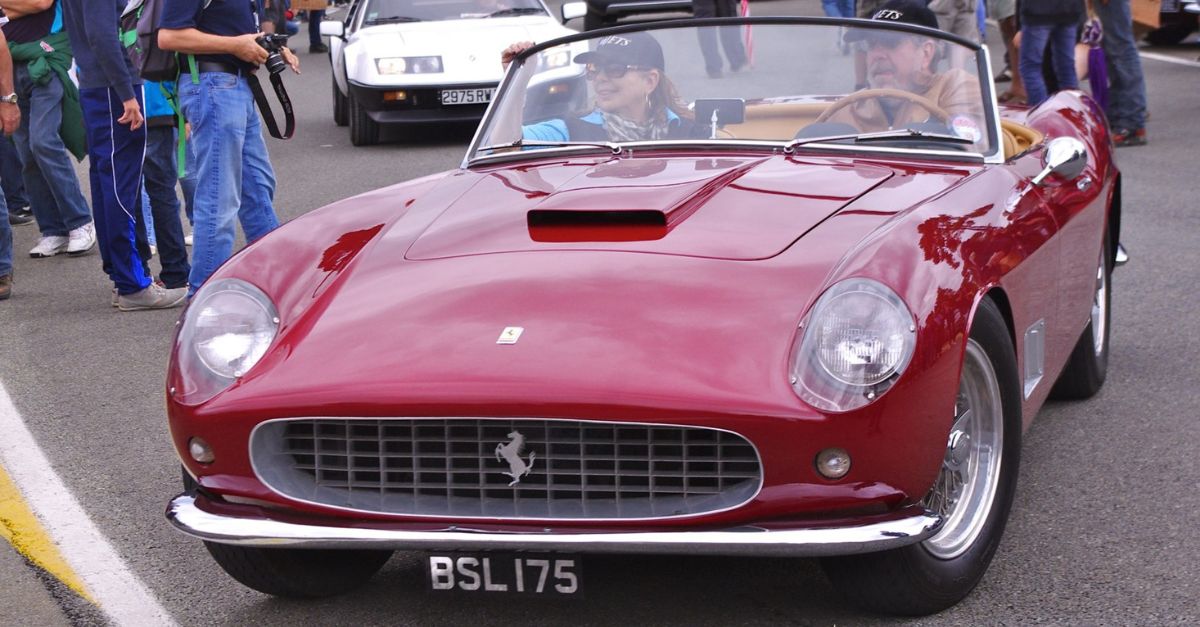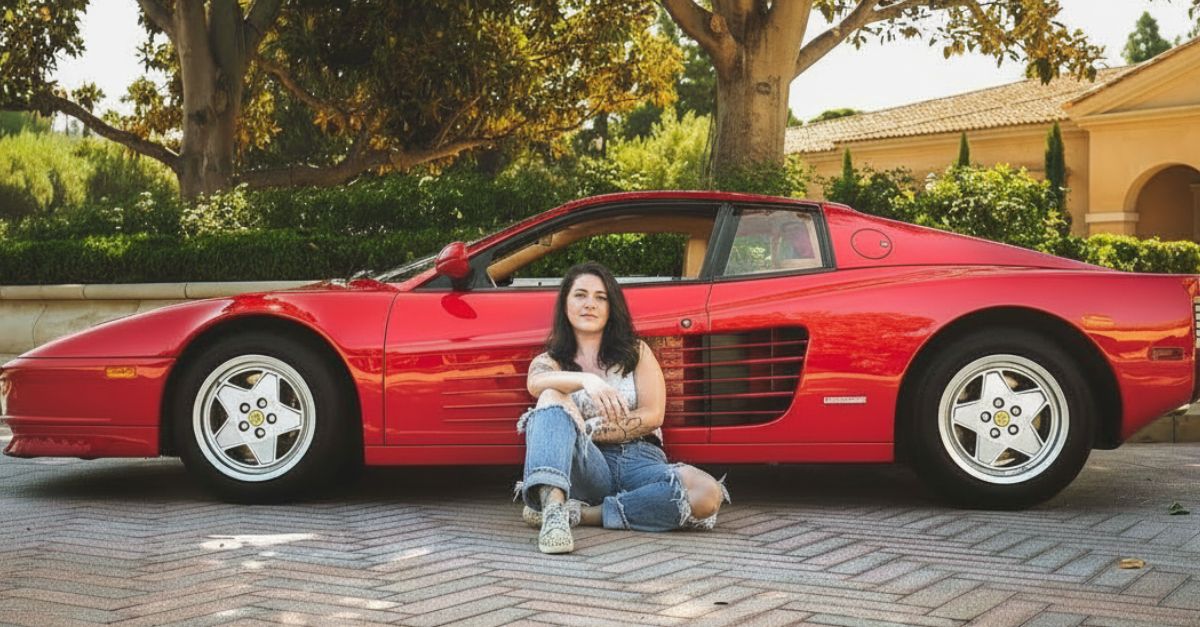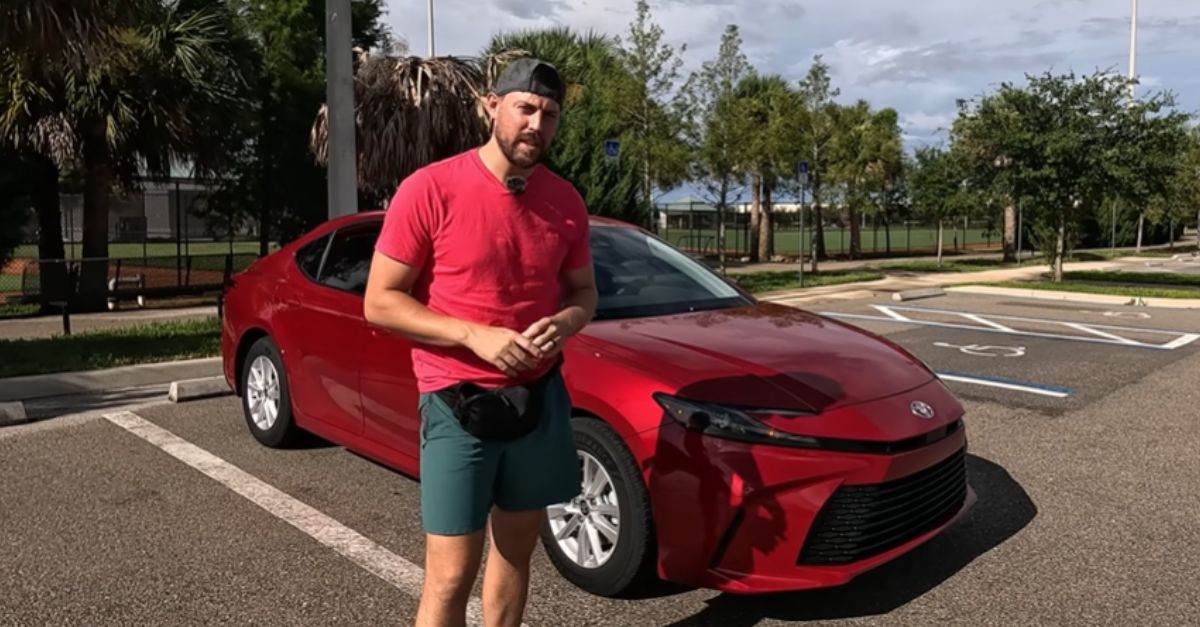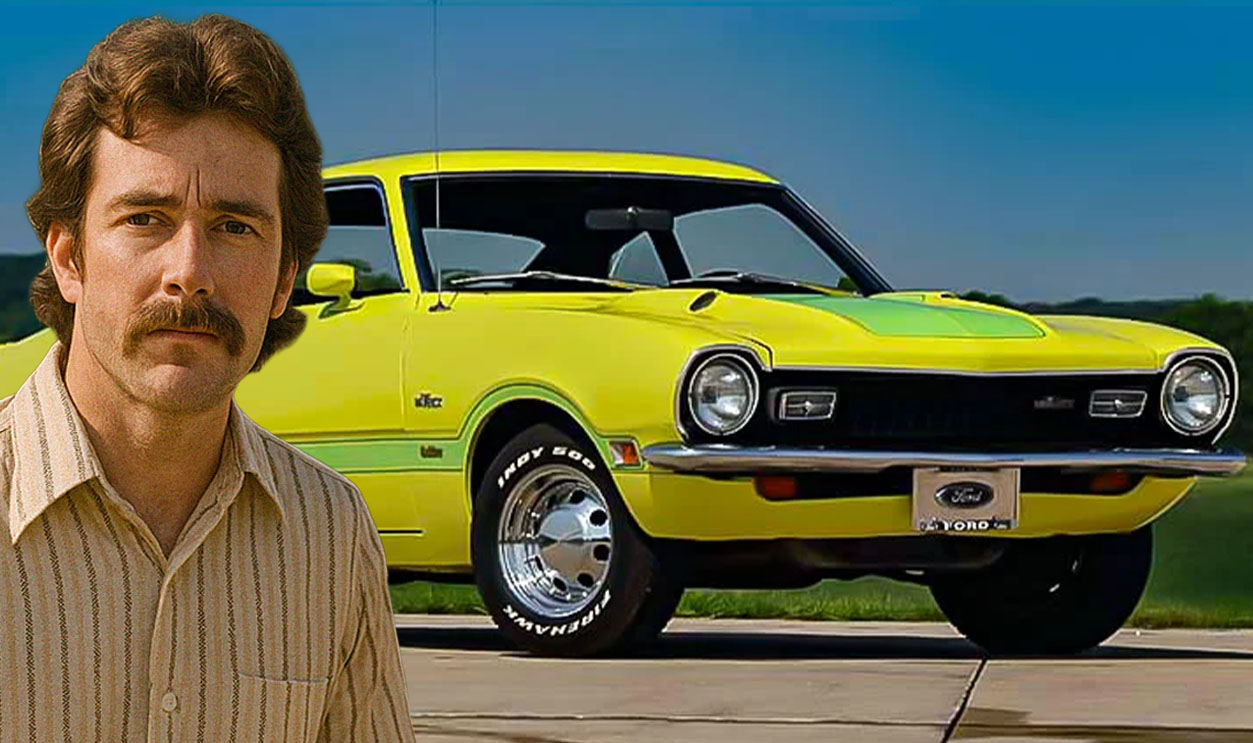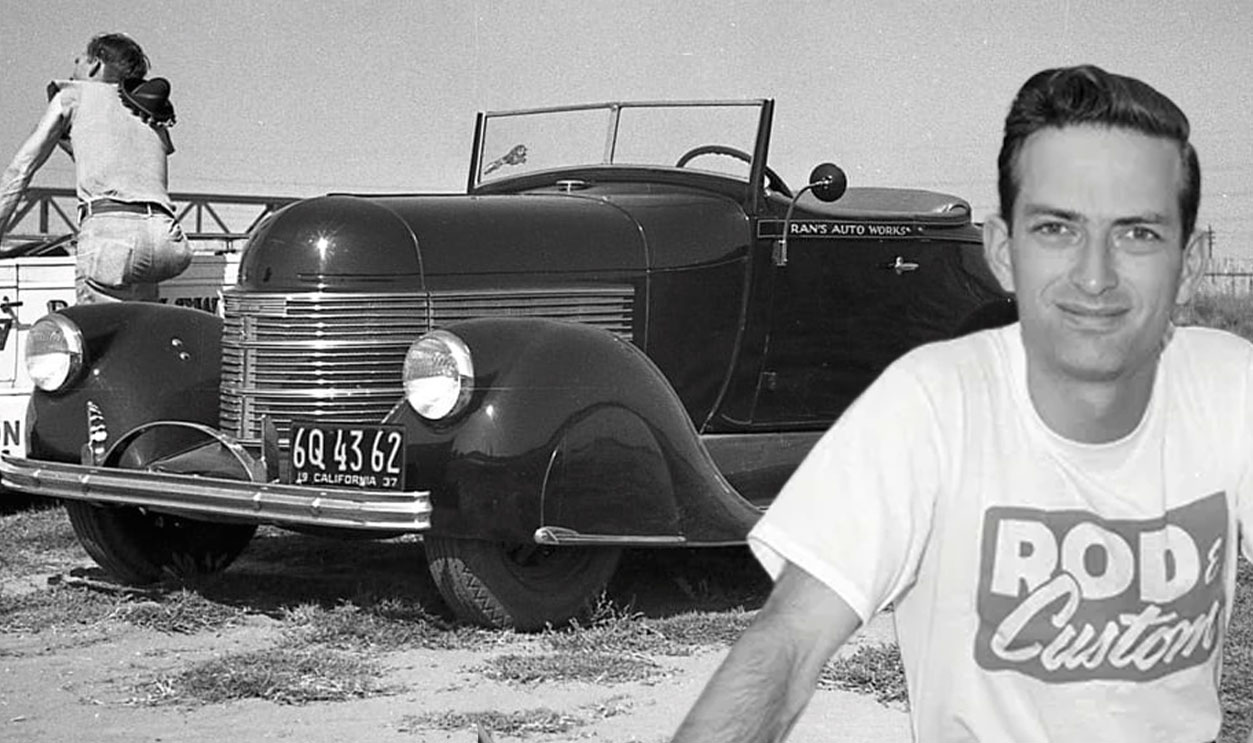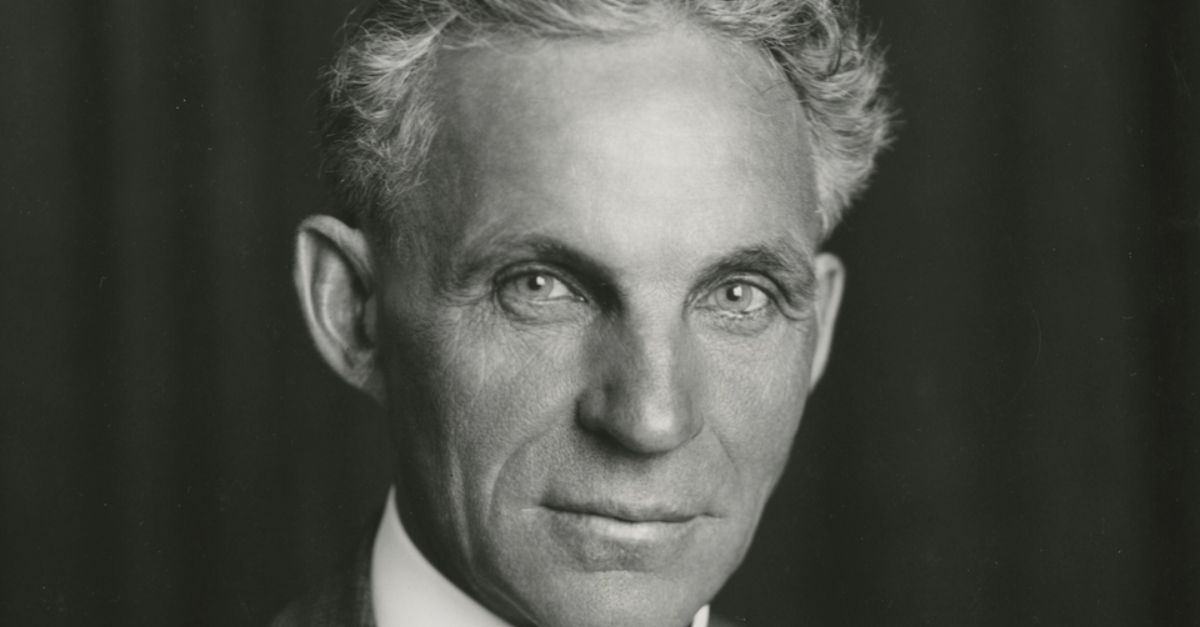It's The Ferrari That Stole The Show
Every fan of Herman Munster knows how much he loves to flaunt elegant cars with his family. For instance, his son Eddie was seen in a stunning Ferrari in the 1966 movie Munster, Go Home! The marvelous automobile immediately caught the attention of car lovers.
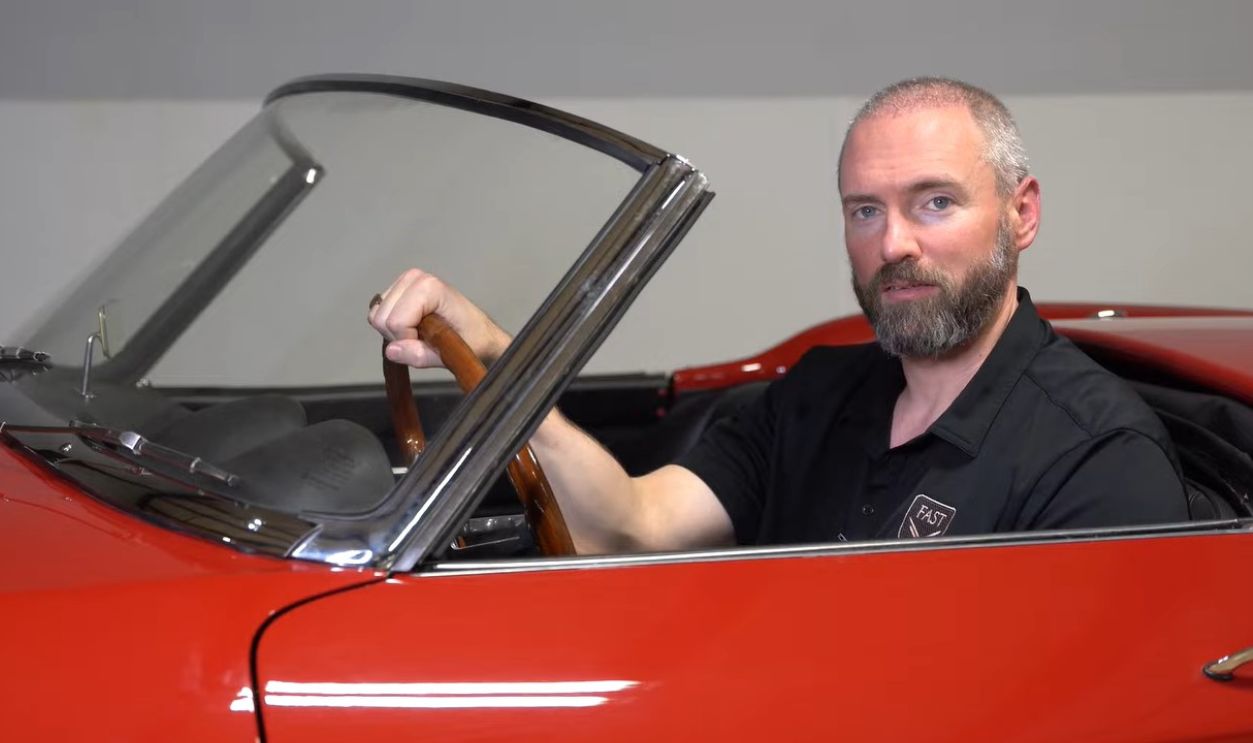
But First, Meet Herman Munster
Herman Munster, the lovable and quirky patriarch of the Munster family, first graced TV screens in The Munsters, which debuted in 1964. Known for his Frankenstein-inspired look and goofy charm, Herman became a pop culture icon. And guess what? The guy loved cars.
 Herman Munster… Father of the Year | The Munsters by The Munsters
Herman Munster… Father of the Year | The Munsters by The Munsters
Here’s How We Know
Herman Munster’s love for cars was undeniable. He had custom rides like the Drag-U-La and the Munster Koach. In Munster Go Home!, his awe-struck reaction to the 1960 Ferrari 250 GT California Spyder confirmed that his love extended beyond spooky contraptions.
 torroid, CC BY 2.0, Wikimedia Commons
torroid, CC BY 2.0, Wikimedia Commons
Who His Son (Heir) Was
Eddie Munster was Herman's son. He was a half-vampire, half-werewolf with a love for mischief. With his classic widow's peak and playful antics, Eddie would often steal the spotlight for himself. Though Herman was the star, Eddie's youthful curiosity brought a unique dynamic to the Munster family’s adventures.
 Can Eddie Let Herman Shave? | The Munsters by The Munsters
Can Eddie Let Herman Shave? | The Munsters by The Munsters
The First Scene With A Ferrari
Who would forget the first glimpse of the Ferrari in Munster, Go Home!? Here, Herman stumbles upon the sleek, red beauty in a comical twist of fate. His towering frame contrasts hilariously with the car’s elegant design as he awkwardly attempts to fit inside. It gets better.
 Munster, Go Home! (1966) - Official Trailer by ScreamFactoryTV
Munster, Go Home! (1966) - Official Trailer by ScreamFactoryTV
When He Steps In
Another thing that made Herman fall in love with the Ferrari instantly was its roaring engine, which sparked power and ignited excitement. The smile on his face told it all. What was not to love about this car and his son, Eddie, picked it up. Wondering how his first reaction was? Read on.
 Brett Weinstein, CC BY-SA 3.0, Wikimedia Commons
Brett Weinstein, CC BY-SA 3.0, Wikimedia Commons
What Caught His Son’s Eyes About The Car
Eddie Munster’s fascination with the Ferrari was immediate. The car’s bold, shiny red exterior gleamed like a beacon of adventure, capturing his imagination. Its sleek curves and sporty silhouette made it look fast and daring—perfect for a young boy dreaming of thrilling escapades.
 Ferrari 250 GT California by DtRockstar1
Ferrari 250 GT California by DtRockstar1
What About This Car Was Child-Exciting
For a kid, the Ferrari was like a real-life toy. The roar of its engine was exhilarating, like the growl of a mighty beast. You could hear Dad coming from a block away. Its convertible top promised freedom and fun, while the pop-up headlights added a playful, almost magical quality.
 Munster, Go Home! (1966) - Official Trailer by ScreamFactoryTV
Munster, Go Home! (1966) - Official Trailer by ScreamFactoryTV
Beyond The Munsters, A Star Is Born
Just like Herman and his son, car enthusiasts were also drawn to the Ferrari’s iconic design. Oh, and the impeccable engineering as well. The 250 GT California Spyder featured in the movie carried a roaring V12 engine, a lightweight build, and unmatched performance.
 Rex Gray, CC BY-SA 2.0, Wikimedia Commons
Rex Gray, CC BY-SA 2.0, Wikimedia Commons
Making Of The Legendary 250 GT
Just as the Munsters represented a unique blend of horror and American family values, the California Spyder emerged from a distinctive cross-cultural collaboration due to the Ferrari and Pininfarina collaboration. The essence of Italian dolce vita (the sweet life) sent waves of adoration among car enthusiasts.
 richebets, CC BY 2.0, Wikimedia Commons
richebets, CC BY 2.0, Wikimedia Commons
Ferrari Getting Love From The Americas, Too
Ferrari also caught the attention of the American market. Jon Von Neumann and Luigi Chinetti, the major dealers on the West Coast, urged Ferrari to make a sportier car and a convertible designed exclusively for the US market. It was a success.
 Doug Fawley, CC BY 3.0, Wikimedia Commons
Doug Fawley, CC BY 3.0, Wikimedia Commons
The Pininfarina And Scaglietti Designing Elegance
This masterpiece came into existence with the help of big names in design, such as Pininfarina and Scaglietti. It was built on a long wheelbase (LWB) chassis of 102.4 inches and later adjusted to a short wheelbase (SWB) model of 94.5 inches in 1959.
 Thesupermat, CC BY-SA 3.0, Wikimedia Commons
Thesupermat, CC BY-SA 3.0, Wikimedia Commons
LWB Vs SWB
Fifty Long Wheelbase 250 GT SWB California Spyders were built, in contrast with fifty-six Short Wheelbase models. Those six extras aren't a glaring indicator of favoritism. The additional six may be due to the fact that SWBs were more agile.
 Daniel J. Leivick, CC BY-SA 3.0, Wikimedia Commons
Daniel J. Leivick, CC BY-SA 3.0, Wikimedia Commons
250 GT LWB Debut In Geneva
Ferrari showcased its 250 GT LWB in 1960 at the Geneva International Motor Show. Assembled in Modena, Italy, the car came with a removable hardtop and covered headlights. It dazzled buyers with its appealing design, sending waves of excitement among car lovers.
 1959 Ferrari 250 GT LWB California Spider Walk Around | Bring a Trailer by Bring a Trailer Vault
1959 Ferrari 250 GT LWB California Spider Walk Around | Bring a Trailer by Bring a Trailer Vault
The 250 GT LWB Is Also Called The Ferrari 250 Gran Turismo
The Ferrari 250 GT LWB was appropriately named the Ferrari 250 Gran Turismo Spyder California. However, others know it as the Ferrari 250 California as well. Among the most iconic and regarded Ferraris ever built, it is no less than a Hollywood superstar.
 CCBain, CC BY 3.0, Wikimedia Commons
CCBain, CC BY 3.0, Wikimedia Commons
Hand-Built From Front To Back
Like the majority of Ferrari competition cars from that era, the 250 GT California Spyder was hand-built by Carrozzeria Scaglietti at its Modena plant. Pinin Farina was renowned for its body designs, but other obligations prevented it from producing the California Spyder.
 1961 Ferrari 250 GT SWB California Spider | Pebble Beach Auctions 2024 by GoodingandCompany
1961 Ferrari 250 GT SWB California Spider | Pebble Beach Auctions 2024 by GoodingandCompany
The Sleek Design
Sergio Scaglietti was the designer of this masterpiece. While closely resembling the Ferrari 250 GT Cabriolet Pinin Farina Series I, it had a more slender profile. Along with a strong shark mouth grille, its body lines flowed from the front lights to the wings's curves.
What They Created Was A Timeless Design
Many of the Berlinetta's aesthetic elements, such as the recognizable "hip recess" in front of the rear wheels, are still present on the California Spyder. Its convertible form makes the windshield slope more noticeable. This sports car still dazzles car enthusiasts with its outstanding design to date.
The Minimalist Interior
Despite having a similar finish to the 250 GT Cabriolet Pinin Farina I, the 250 GT California Spyder's interior is distinguished by a minimalist design that puts utility over luxury. This provides it with a more straightforward and practical appearance.
 Herranderssvensson, CC BY-SA 4.0, Wikimedia Commons
Herranderssvensson, CC BY-SA 4.0, Wikimedia Commons
Functional Dashboard And Nardi Steering Wheel
The tachometer and rev counter are two of the seven circular dials on the dashboard, providing vital engine operation information. These dials are mounted behind a three-spoke aluminum and wood Nardi steering wheel in the extended wheelbase (LWB) variant. And here is how they compare.
 Driving The Ferrari 250 GT California Spyder - Italian V12 Sound (POV Binaural Audio) by Tedward
Driving The Ferrari 250 GT California Spyder - Italian V12 Sound (POV Binaural Audio) by Tedward
LWB’s Classic Dials Vs SWB’s Linear Layout
While the dials are behind the three-spoke Nardi steering wheel in the LWB version, the SWB version has the dials in a linear arrangement on the dashboard. Regardless, both versions came with astonishing interior design and luxurious features.
 Ferrari 250 GT California Dashboard Retrim by O'Rourke Coachtrimmers & Supplie
Ferrari 250 GT California Dashboard Retrim by O'Rourke Coachtrimmers & Supplie
Power And Elegance
The 250 GT California Spyder was equipped with the Colombo V12 engine that generated 240 horsepower. Apart from that, it offered a great driving experience. With the luxury and comfort of a convertible, this Ferrari offered everything a sports car buyer desires.
 Driving The Ferrari 250 GT California Spyder - Italian V12 Sound (POV Binaural Audio) by Tedward
Driving The Ferrari 250 GT California Spyder - Italian V12 Sound (POV Binaural Audio) by Tedward
More About The Colombo's Legendary V12 Engine
The V12 naturally aspirated engine of the Spyder had two overhead camshafts with two valves per cylinder. Light alloy was used to construct the engine block and the cylinder. Moreover, it would generate a horsepower of 240hp and torque of 181 lb-ft.
 Driving The Ferrari 250 GT California Spyder - Italian V12 Sound (POV Binaural Audio) by Tedward
Driving The Ferrari 250 GT California Spyder - Italian V12 Sound (POV Binaural Audio) by Tedward
Engine Cooling
Spark plugs were relocated outside the V configuration in 1960 to facilitate maintenance. The front air intake is usually supplemented by two side vents, including three polished aluminum slots behind the front wheels, which help with engine ventilation.
 Driving The Ferrari 250 GT California Spyder - Italian V12 Sound (POV Binaural Audio) by Tedward
Driving The Ferrari 250 GT California Spyder - Italian V12 Sound (POV Binaural Audio) by Tedward
What About Speed?
Be it the unbeatable performance or the appealing design, the Ferrari 250 GT California Spyder was way ahead of its time. It could achieve a top speed of 145 miles per hour and go from 0 to 60 miles per hour in 6.5 seconds.
 Driving The Ferrari 250 GT California Spyder - Italian V12 Sound (POV Binaural Audio) by Tedward
Driving The Ferrari 250 GT California Spyder - Italian V12 Sound (POV Binaural Audio) by Tedward
Spyder’s Engineering And Suspension
At the front, the 250 GT California Spyder has a separate suspension system with coil springs and overlaid triangles, while at the back, it has a stiff axle supported by leaf springs and controlled by four push struts and link shocks.
 1959 Ferrari 250 GT LWB California Spider Walk Around | Bring a Trailer by Bring a Trailer Vault
1959 Ferrari 250 GT LWB California Spider Walk Around | Bring a Trailer by Bring a Trailer Vault
Advanced Chassis Design With Balanced Suspension
While having a similar chassis design to the Berlinetta, the 250 GT LWB had an independent suspension along with coil springs. The car had a rigid axle in the back held by leaf springs. Furthermore, LWB’s Houdaille shocks were replaced by Telescopic shocks.
 REVealed: 1958 Ferrari 250 GT LWB California Spider BY GoodingandCompany
REVealed: 1958 Ferrari 250 GT LWB California Spider BY GoodingandCompany
Iconic Tubular Chassis With Modern Upgrades
The chassis still retained Ferrari's signature tubular design. However, the doors were made from aluminum, and the rest of the body was constructed of steel. While the wheels had drum brakes initially, these were later swapped with disc brakes from Dunlop.
 REVealed: 1958 Ferrari 250 GT LWB California Spider BY GoodingandCompany
REVealed: 1958 Ferrari 250 GT LWB California Spider BY GoodingandCompany
Its Lightweight Design, Met Racing Power
The 250 GT SWB California Spyder's steel body panels were far too heavy for racing, so they were swapped with light-gauge aluminum body panels. Along with improving the engine specifications, the Ferrari added a larger tank and a quick-release fuel filler.
Racing Glory
While the Munsters' Ferrari brought smiles to television audiences, its real-world counterparts were earning respect on the racetrack. Bob Grossman's fifth-place finish at Le Mans in 1959 proved this wasn't just another pretty face in Hollywood. It meant business—the winning kind.
 Marty B, CC BY-SA 2.0, Wikimedia Commons
Marty B, CC BY-SA 2.0, Wikimedia Commons
Bob Grossman
Bob Grossman from the United States is among the most accomplished drivers of 250 GT California. Renowned for his notable success, he achieved remarkable feats, including finishing among the top at Le Mans in 1959, where he co-drove with Fernand Tavano in the LWB chassis 1451 GT.
 1958, Ferrari 250 GT California Spider LWB & 1964 Ferrari 250 GT Lusso Berlinetta by Artcurial
1958, Ferrari 250 GT California Spider LWB & 1964 Ferrari 250 GT Lusso Berlinetta by Artcurial
Finished In Silver With Bright-Blue Upholstery
Immediately following Le Mans, the vehicle was sent back to Maranello for a final paint job in metallic silver and appropriate bright blue upholstery. After that, the car was shipped back to the US, where Grossman continued to race it with immense success.
 1959 Ferrari 250 GT California Spider Ex. Roger Vadim by Artcurial
1959 Ferrari 250 GT California Spider Ex. Roger Vadim by Artcurial
Chassis No. 1451 Finds New Owners
In 1960, Grossman sold chassis No. 1451. It passed through numerous unrecorded owners until it surfaced in the care of a Maryland banker in the 1970s. Fast forward to 1981, it was purchased by collector Jon Masterson of Long Beach, Calif.
 1959 Ferrari 250 GT California Spider Ex. Roger Vadim by Artcurial
1959 Ferrari 250 GT California Spider Ex. Roger Vadim by Artcurial
Masterson’s Restoration
Masterson ordered a complete restoration, which included repainting the vehicle in Rosso Corsa red with a tan leather interior. The extensive work received first-in-class recognition at the 1983 Pebble Beach Concours d’Elegance and Best in Show at the 1984 Ferrari Club of America Concours.
 Ferrari 250 GT California by DtRockstar1
Ferrari 250 GT California by DtRockstar1
Racing And Rallying Legend
The car’s dual-purpose role was fully utilized by the Masterson. He campaigned the 250 GT California at the Monterey Historics at Laguna Seca on four separate occasions and also participated in the 1,000-mile Colorado Grand rally in 1990.
 Colorado GRAND 1000 - 2021 by Kurt Furger
Colorado GRAND 1000 - 2021 by Kurt Furger
From Masterson To Collector Gruss To Obry
Masterson sold the model to New York Ferrari collector Martin Gruss in 2007, who used it extensively, notably during rallies like the Copperstate 1000 across the Arizona desert. It was dispatched to leading Ferrari specialist Wayne Obry’s Motion Products Inc. in Wisconsin after two years.
 FERRARI 250 GT CALIFORNIA SPYDER REPLICA by RENUCCI - OVERVIEW and driving [2017 HQ] by effeNovanta
FERRARI 250 GT CALIFORNIA SPYDER REPLICA by RENUCCI - OVERVIEW and driving [2017 HQ] by effeNovanta
Restored To Le Mans Glory
It received its second complete restoration at Wayne Obry’s Motion Products. The undertaking restored the automobile to its original Le Mans race specifications, which included restoring its eye-catching shiny silver exterior and vivid blue interior. In 2014, Pebble Beach awarded the repair a third-in-class ranking.
 REVealed: 1958 Ferrari 250 GT LWB California Spider by GoodingandCompany
REVealed: 1958 Ferrari 250 GT LWB California Spider by GoodingandCompany
Film History Of The Ferrari
Besides the Munsters and racers loving this ride, this 250 GT film history stretches wider. It belonged to numerous French celebrities, including Alain Delon. Sporty convertibles like this remain a mainstay in Ferrari's lineup. The model gained even more considerable recognition after appearing in the 1986 movie Ferris Bueller's Day Off.
 FERRIS BUELLER'S DAY OFF | Official Trailer | Paramount Movies by Paramount Movies
FERRIS BUELLER'S DAY OFF | Official Trailer | Paramount Movies by Paramount Movies
It’s Rarity Had The Ferris Bueller's Day Off Use A Replica
Did you know the replica of this model was used instead of the original one in Ferris Bueller's Day Off? That’s because of the rarity of this car. To put it into perspective, only 106 pieces of the 1961 Ferrari 250 GT California were ever produced—50 LWBs and 56 SWBs.
This Is The Ferrari That Ruled Hollywood’s Streets
You drive the 250; you exude status. Ask celebrities, such as James Coburn, who drove it through Beverly Hills and the West Coast streets. This GT has gained immense popularity in Hollywood and has left a mark on American culture: To get one, you need millions.
 ABC Television, Wikimedia Commons
ABC Television, Wikimedia Commons
One Sold For $17.99 Million At An Auction
The chassis Number 1451 sold for a whopping $17.99 million when it went up for auction through RM Sotheby's in 2017. Looking at the huge amount that buyers are willing to pay, the car has proved its exceptional demand. Why?
 RM Sotheby's | Monterey - 17 August 2024 by RM Sotheby's
RM Sotheby's | Monterey - 17 August 2024 by RM Sotheby's
It’s A Collector’s Dream
This Munster beloved car remains one of the most sought-after cars in the collector’s market, with its prices surpassing $17 million at auctions. California Spyder’s luxurious features and exceptional performance still echo in the automotive industry. To this day, the car is admired for its unique driving experience.
 RM Sotheby's | Monterey - 17 August 2024 by RM Sotheby's
RM Sotheby's | Monterey - 17 August 2024 by RM Sotheby's
The Most Pricey Vehicles
Apart from being aesthetically pleasing, it is among the most pricey vehicles. On May 18, 2008, television host Chris Evans paid a record €7,040,000 (approximately $7,744,000) for a model that had belonged to actor James Coburn at the Sotheby's "Ferrari Legends and Passions" auction.
 Chris Evans | What's Up TV by Licklemor Productions
Chris Evans | What's Up TV by Licklemor Productions
Another Sells For €14 Million ($14,584,990)
A short chassis variant of the 250 GT California, previously owned by Roger Baillon and had been forgotten for almost 30 years, was sold for €14,200,000 ($14,796,059), not including auction fees, at the Artcurial sale held during the Retromobile event on February 6, 2015.
 Driving a Ferrari 250 GT California Spyder in the Hills of San Francisco. by citoscamera
Driving a Ferrari 250 GT California Spyder in the Hills of San Francisco. by citoscamera
A Lasting Legacy
The Munsters may have been a family of lovable monsters, but they recognized true beauty. Their brief encounter with the Spyder in Munster, Go Home! perfectly represented its allure: it could turn heads and capture hearts, whether you were a Hollywood star, a racing champion, or a friendly monster.
 Munster, Go Home! (1966) - Official Trailer by ScreamFactoryTV
Munster, Go Home! (1966) - Official Trailer by ScreamFactoryTV

